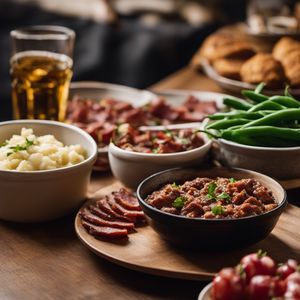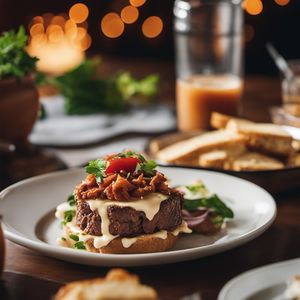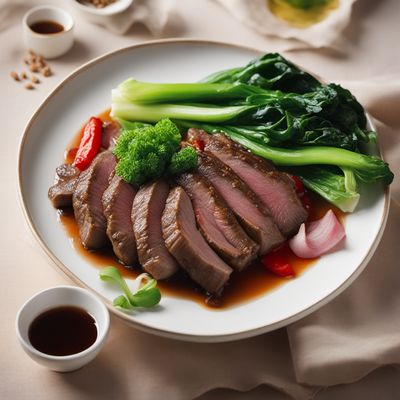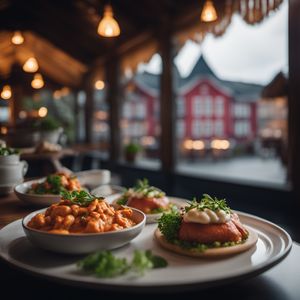
Dish
Skomakarlåda
Shoemaker's Box
Skomakarlåda is made by layering thinly sliced beef, potatoes, and onions in a baking dish. The dish is then baked in the oven until the beef is cooked and the potatoes are tender. Skomakarlåda is typically served with a side of lingonberry jam and a green salad.
Origins and history
Skomakarlåda is a traditional Swedish dish that has been enjoyed for centuries. The name "skomakarlåda" translates to "shoemaker's box," which is a reference to the wooden boxes that shoemakers used to store their tools. The dish is believed to have originated in the 19th century and was a popular meal among Swedish shoemakers.
Dietary considerations
Skomakarlåda is not suitable for vegetarians or vegans as it is made from beef. It is also high in calories and carbohydrates, so it should be consumed in moderation as part of a balanced diet.
Variations
There are many variations of skomakarlåda, including versions made with pork or chicken instead of beef. Some people also like to add vegetables, such as carrots or mushrooms, to the dish for extra flavor and nutrition.
Presentation and garnishing
Skomakarlåda is typically served in a baking dish and can be garnished with fresh herbs or sliced onions for extra flavor.
Tips & Tricks
To make the best skomakarlåda, it is important to use high-quality beef and to slice the potatoes and onions thinly and evenly. The dish should be baked in the oven until the beef is cooked and the potatoes are tender. It is also important to let the dish rest for a few minutes before serving to ensure that the flavors are evenly distributed.
Side-dishes
Skomakarlåda is typically served with a side of lingonberry jam and a green salad. Other popular side dishes include boiled vegetables and pickled cucumbers.
Drink pairings
Skomakarlåda pairs well with a variety of drinks, including beer, red wine, and aquavit. A cold beer is the perfect complement to the hearty flavors of the dish, while a glass of red wine can help balance out the richness of the beef.
Delicious Skomakarlåda recipes
More dishes from this category... Browse all »

Alouettes sans têtes
French cuisine

Arrollado de malaya
Mexican cuisine

Asado con cuero
Argentinian cuisine

Asado mazatleco
Mexican cuisine

Asado negro
Venezuelan cuisine

Beef Manhattan
American cuisine

Beef Stroganoff
Russian cuisine

Beef Wellington
British cuisine






